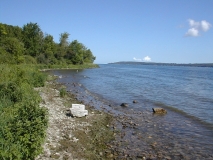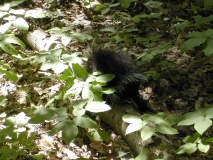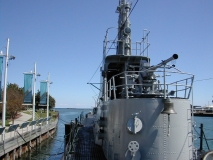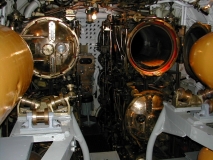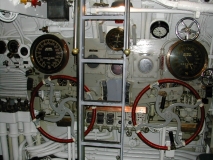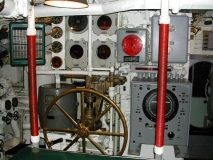The morning was clear and cool and the weather forecast promised a picture-perfect day.
Our agenda included a sightseeing trip through Door County, which is the peninsula that separates Green Bay from Lake Michigan. We set out early and were pleased at how pretty the area is. The small towns along the way were very clean and the farms were well tended. Mercifully, the cherry orchards were already picked clean (cherries are a weakness). We got as far north as Sturgeon Bay, which is a good size town for the area and spent time in a nearby State Forest that followed the shoreline. We were amazed that the State Park was deserted. A facility like this anywhere in Southern California would be mobbed. Today, a Sunday, most of the parking lots were empty and all you could hear was quiet. We hope these folks know how good they have it.
Our way back followed the coastline along Lake Michigan. Passing through the quaint town of Algoma, we almost found ourselves in the middle of their annual parade. We must have been one of the last cars down Main Street before the parade started and the sidewalks were lined with onlookers. There was only one thing to do: smile and waive to the crowd.
Farther down the highway, we reached the town of Manitowoc, Wisconsin, home of the National Maritime Museum, which documents the fascinating history of shipping and ship building in the Great Lakes region. The museum collections are outstanding and includes the WWII era submarine, the USS Cobia. Here’s the backstory. Shortly after the outbreak of WWII, the shipyards in Manitowoc were commissioned to build about 20 GATO class submarines for the US Navy. The Cobia was one of those boats. Years after the war, the Cobia was decommissioned and eventually ended up as a donation to the museum in Manitowoc. We took the tour through the sub and were surprised to find the tour guide, Roland, had served on a similar boat, the USS Rasher in WWII. His first-hand depiction of life aboard a GATO class submarine was compelling. He had actually been there and survived to tell about it.
Returning to the campground, we decided that dry or not, we were going to fire the bowls, beads and trinkets. We gathered around the campfire, carefully placed the greenware (dry, unfired clay) and got the fire going. The large bowl immediately blew up. The small bowl blew up shortly thereafter. However, to the delight of the group, the beads and ashtray looked good. The remaining items were carefully plucked from the fire with a pair of tongs donated by Ed. Beyond all expectations, a detailed inspection revealed the smaller items had successfully survived the crude bisque firing. We were now proud owners of a terra cotta ashtray, beads and trinkets. With much ceremony, the ashtray was presented to Ed and Mary to commemorate the occasion. We’re sure this will be a conversation piece for years, if it holds together. The beads and trinkets will be added to Jeanne’s cache of adornments.
When the fire burned low, everyone headed for the shelter of their coachs.
